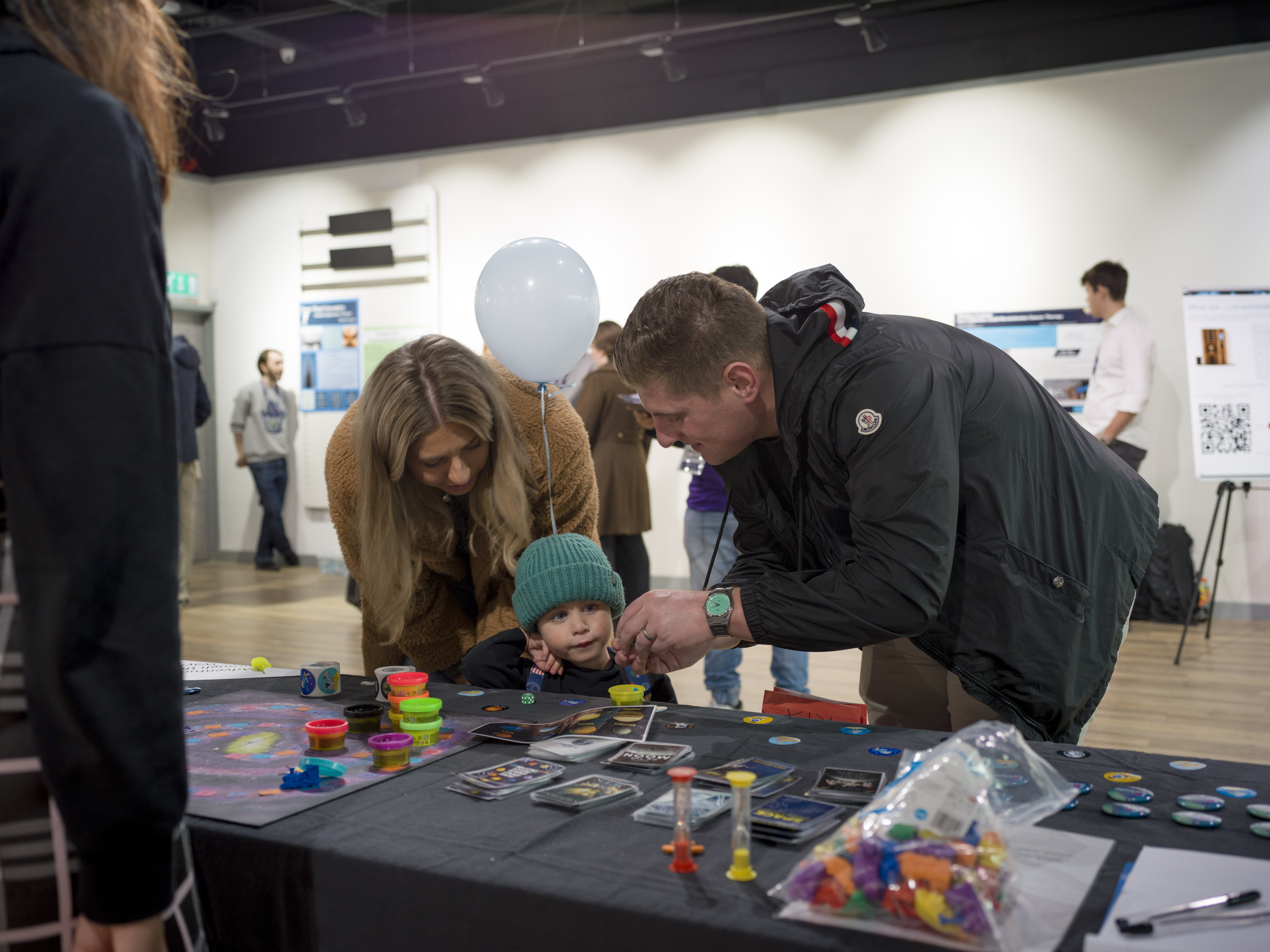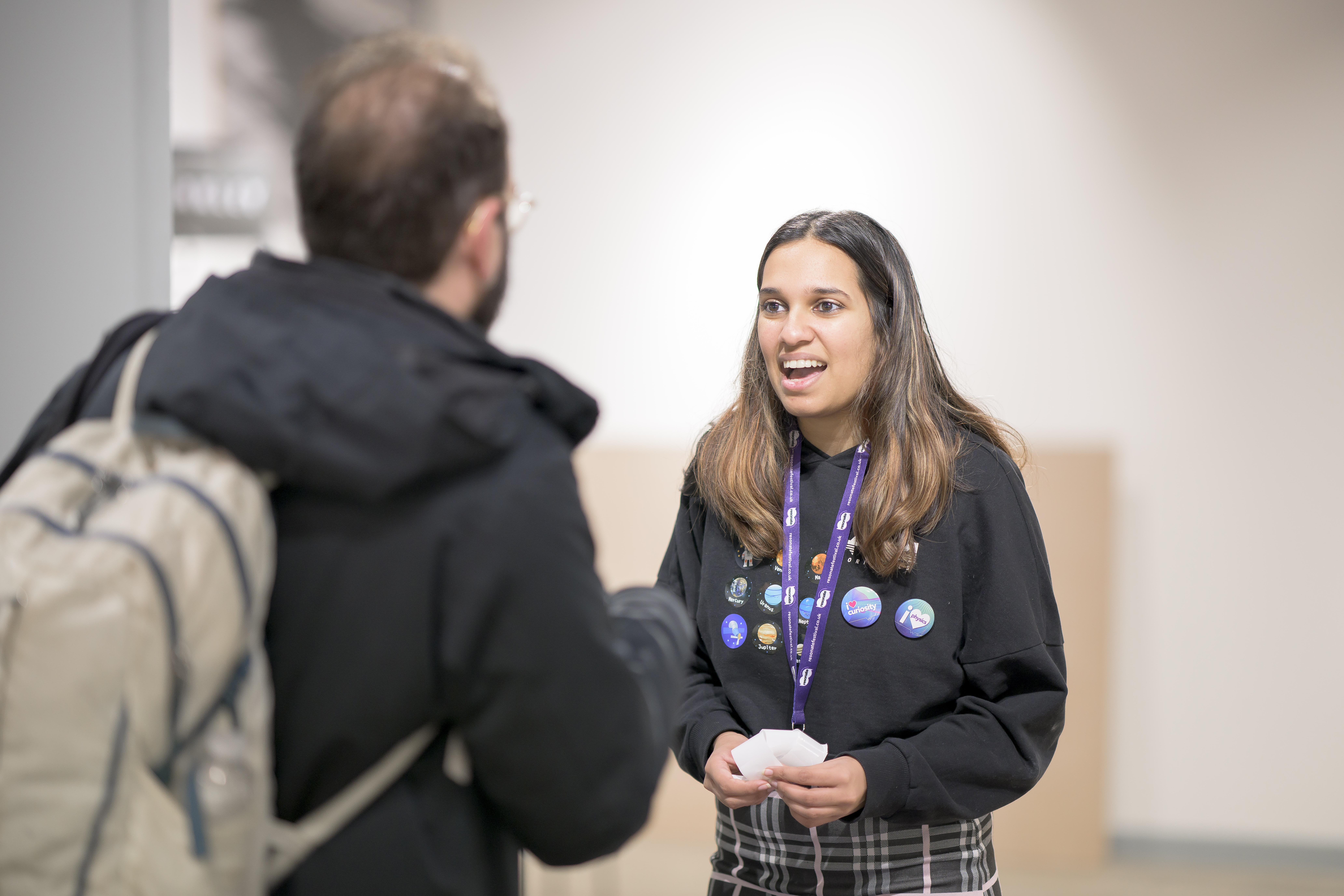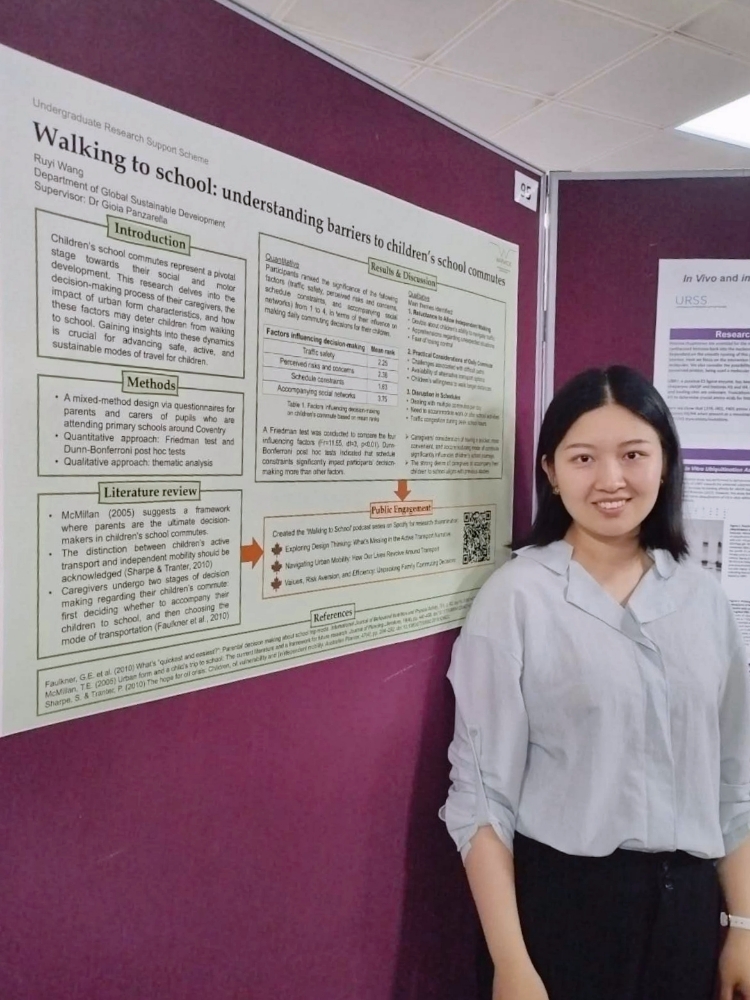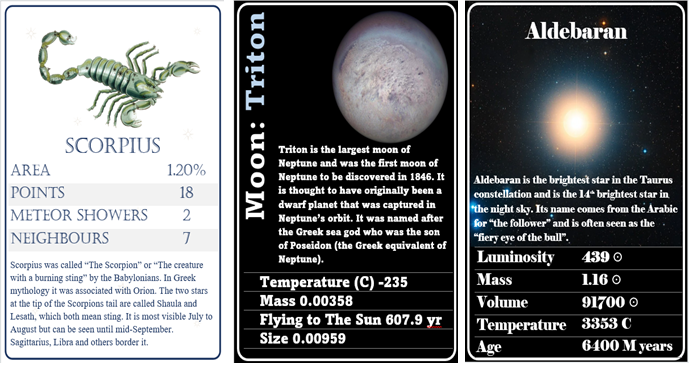Public Engagement Projects
Introduction
On this page you can read about the public engagement projects that students have done through the URSS scheme, with support from the Warwick Institute of Engagement.
URSS 2024
Are you hoping to do a URSS public engagement project in 2024? Find out everything you need to know and sign up to an information session.
Projects in 2023
The Warwick Institute of Engagement is delighted to have funded and supported 11 students to do Public Engagement URSS Projects in summer 2023.
Adventure Through The Milky Way - an educational board game about astrophysics
Gillian Fernandes, supervised by Dr Anne-Marie Broomhall
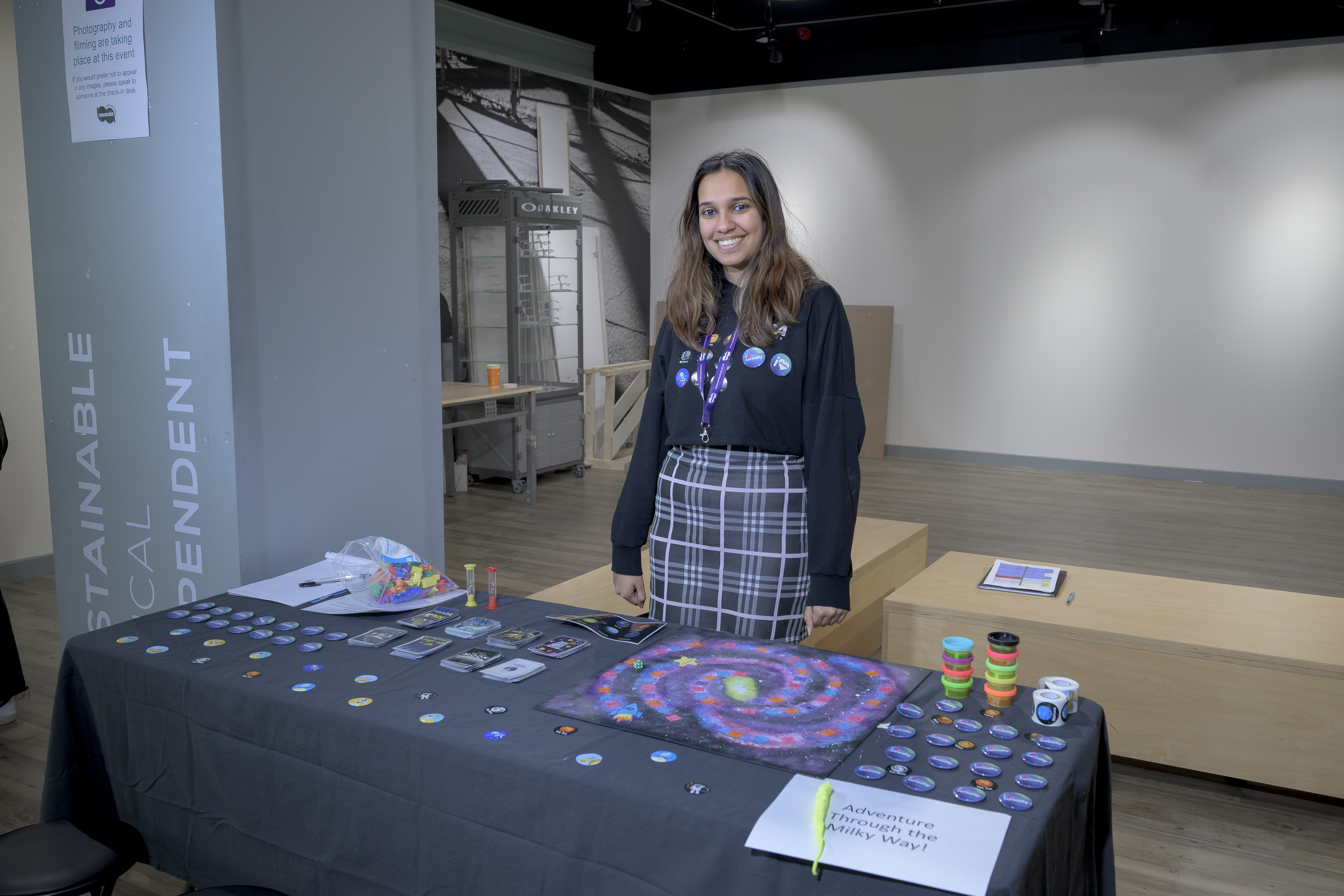
Project proposal (summarised)
For this project I will design a board game which takes you on a journey from the centre of the Milky Way to the centre of the Sun. This will introduce fundamental ideas such as gravitational attraction, orbits in the Solar System, and the different layers of the Sun, explaining fusion and convection zones. Starting from the centre of the Milky Way, players will travel 25,000 light years to our Solar System by rolling a dice. The goal of the board game is to reach Earth while completing challenges from issues such as space weather, comets, exoplanetary systems and satellites. My audience will be 10-12 year olds and I aim to base the theory on year 5 and 6’s national curriculum in regards to their foundational knowledge of space to ensure that I am building on their understanding. The board game could be paired with a short presentation or take away flashcards, thus it may be potentially used as a future learning tool or workshop for students to gain a better understanding and interest in Astrophysics.
How I organised my aims
I organised my aims in a manner of deadlines:
July 1st - 14th (Research)
- I will research about the board game theory and what makes a good board game
- I will evaluate studies on game-based learning and investigate how board games are developed
- I will research the key stage 2 curriculum - I also plan to go beyond this with my astrophysics knowledge
- I will research the theory of travelling to the centre of the Milky Way from Earth, and answer questions such as:
- How long would it take?
- What is space like between the Milky Way and the Earth?
- Space weather, exoplanetary system names and satellite names
- Types of comets, planets and galaxies that would be present in this area?
- I will find the physicists which the students ‘bump’ into on the way eg. Harvard computers, and influential physicists (focusing on women) and learn some background information about these individuals to add to the pamphlets as fun facts
July 14th - July 31st (Practical building)
I will complete these tasks within the given time frame:
-
Start the board game assembly
-
Plan the presentation that could act as an introduction to the board game and what astrophysics is
-
Create the takeaway flashcard/pamphlet that summarises some
-
Create the survey for students
-
Contact schools to present during September
Ideally, if it is possible at the end of July present to a summer camp and take feedback for September presentations
September 1st - 30th (Presenting)
-
Present to at least 5 schools/ summer camps/ brownies/ guides
-
Take feedback from each to improve for the next school and evaluate the board game as a whole.
What I did
In this project, I designed a board game which takes space travellers on a journey through the Milky Way to the sun. The audience for this game is 10-12-year-olds and introduces fundamental ideas such as orbits in the solar system and, the composition of the planets and the galaxies. To succeed and reach home, players must overcome obstacles such as space weather, asteroid attacks, and exoplanetary systems by completing one of 8 tasks. The tasks were based on the KS2 curriculum and included testing students on their physics and maths knowledge while introducing new astrophysical concepts. The board game can be paired with a short presentation; thus, it could be used as a future learning tool or workshop for students to gain a better understanding and interest in Astrophysics.
To develop my understanding of game theory and child psychology I wrote a research paper summarising what I learnt through reading papers.
Furthermore, the tasks I included in the game are detailed below:
- Space weather - Modelling (timed)
- Asteroid - Charades (timed)
- Solar storm (from star) - Pictionary (timed)
- Super Rocket launch - Physics question
- Normal Rocket launch - Maths question
- Stationary on planet - Guess what happens (mini-experiment)
- Stationary on moon - Matching game
- Crash into a star (due to gravity) - Higher and lower questions
Each task had 20 cards associated with it, thus there were 160 cards in total allowing enough range for the children to answer and play the game for over an hour. However, when presenting the game to schools/brownie groups since the classes were 20+ students we played the game with groups of around 6 for 20-minute intervals, which allowed the students to gain a sense of the game.
After the game design was finished I created the base of the board game with paints and coloured cards. With the base being a painting of the Milky Way where players follow the arms of the Milky Way to get home, I tried to align the placement of the sun/home it’s actual position in the Milky Way for scientific accuracy.
After the board came and the cards were finished I started outreach. We had planned to visit 4 brownies guides groups, 1 scouts group and 3-4 schools.
Who I worked with
To design the board game I worked alongside my physics lecturer Anne-Marie Broomhall, and used the Warwick Institute of Engagement's resources to help produce the board game. They also provided the materials to build the board game. We also worked with youth groups such as Brownies, Guides, Scouts and several local primary schools in the Coventry area in presenting the board game.
What I learnt from the experience
Overall I find the main skills I learned were a development in my public speaking and presentation skills. To help with public engagement I attended a masterclass in presenting tabletop activities which helped greatly in learning specific skills which I used later in outreach. Moreover, I learnt skills in communication, specifically how to deliver information to different age groups and how to adjust the scope when describing the game to adults. This came into practice when I had to present the game to the girl's guides leaders, and teachers and was further developed in my public outreach activity in Leamington where I presented the game to the public. These experiences helped greatly in growing my confidence in presentations.
Furthermore, I learnt a lot more about child psychology and how children can learn through games; with games providing an interactive space for brain development by providing a space where children can proactively learn. Additionally, I learnt organisational skills when scheduling the outreach sessions in between my academic life.
Evaluation: checking if I achieved my aims
Overall I would say I did achieve my aims. After visiting some schools I asked the children to fill out a feedback form on what they thought of the game and any ways to improve the game. I conducted this by allowing them to rate the game on a 1-10 unit scale. With the average response 9.67/10 rating of the game. 100% of the students said they would recommend the game to a friend and they would play the game again.
With most of the children telling me “[they] wanted more time to play the game”; with all of them saying “[they] thoroughly enjoyed playing the game”.
In light of these responses, I would like to say I achieved my aim of producing an educational game which allows children to learn about astrophysics enjoyably. Moreover, by presenting to several brownie groups I achieved my goal of getting more girls involved in science, with some of the girls saying “they wanted to be an astronaut when they grow up”.
Advice for future students
If there are any future projects involving building a board game or creating cards I would tell them to dedicate at least 2 weeks to producing the cards as they can take way longer to cut glue and laminate than you think.
For future public engagement students presenting an educational resource to children, I would encourage them to not overestimate the children's abilities and be prepared to explain concepts. Also, be prepared for lots of questions and also having to correct children's misconceptions. Further, I would heavily encourage having a tactile activity, whether it's playdough drawing or some sort of craft alongside as children love creativity and some children who have difficulty paying attention can find it helpful to draw/fiddle. Nearly all the children that played the game were extremely eager to play with the play dough and it helped them associate colours with planets.
In general, for public engagement students, I would encourage having some sort of takeaway for their audience. I provided the public/children with stickers, this helps with publicity and also increases the chances of individuals remembering your activity, and gives them something to look forward to after the presentation.
If someone is nervous about presenting I would heavily recommend they present to a group of friends before and ask for feedback. And have a bullet-point list of what you want the public to know.
Projects in 2022
Read about the public engagement projects students did in 2022.
Costuming the Consulate
Eve Register, supervised by Professor Katherine Astbury
Eve's plans
In 1799, when Napoleon came to power, theatre was the most important cultural form in France. His reign coincides with a golden era on the Parisian stage but that is now forgotten (the defeat at Waterloo meant that everything attached to the regime was dismissed subsequently). One of the main innovations was that theatres started to focus more on local colour in sets and costumes which prompted print sellers to publish colour illustrations of key actors in costume. I will work as part of a research team (Professor Kate Astbury and Marie Curie fellow Dr Paola Perazzolo) to identify the most popular plays of the period 1799-1804 and prepare a number of entries in an online exhibition (using a simple Omeka template of the sort that Professor Astbury used for 100days.org.uk). I will also be producing a small physical exhibition to be housed at Portchester Castle in Hampshire where a production of a play by French prisoners of war from the Napoleonic period is to be staged in mid-July 2022. The audience of the project will predominantly be visitors to Portchester Castle and more specifically people coming to watch the production of the play. The audience will be led to the physical exhibition where they can see our banners and have the chance to access the online exhibition if they wish to learn more. We will also advertise the online exhibition to people with specific academic interest in the field of our research (including Warwick students in our SMLC department).
The exhibition
Eve created the banners on Rousseau and Madame Angot, which are still on display in Portchester Castle. You can read the text of the banners here.
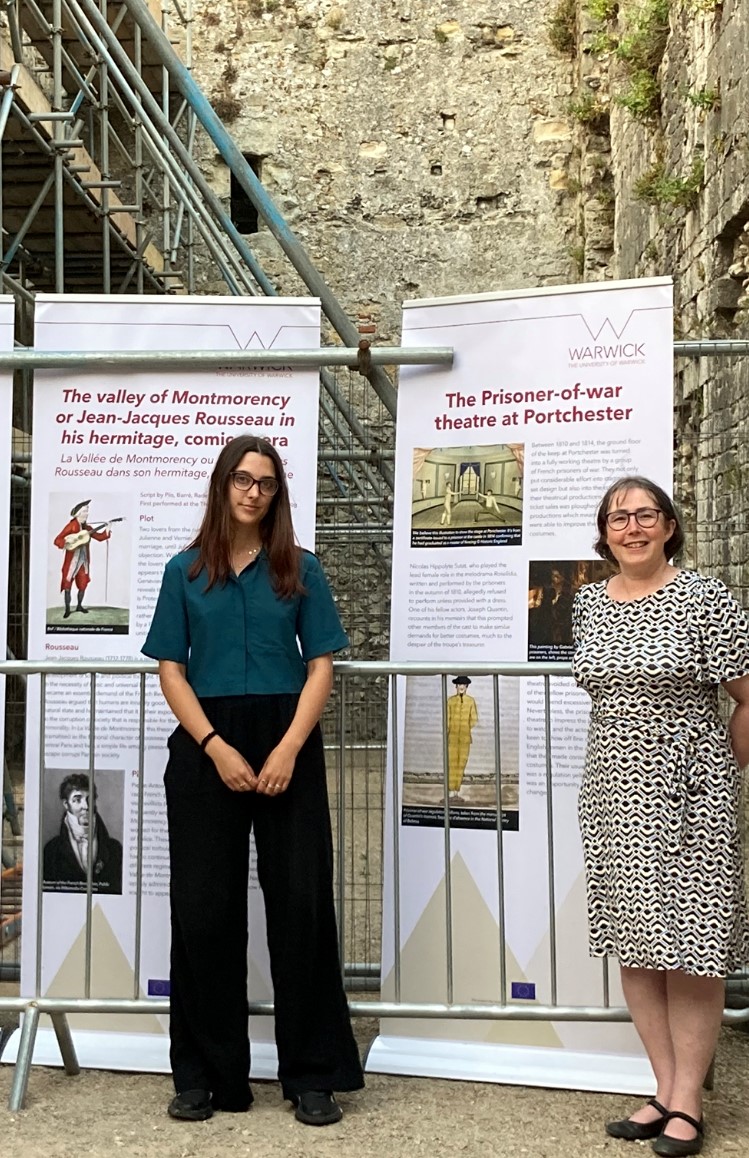
Reflecting on the project
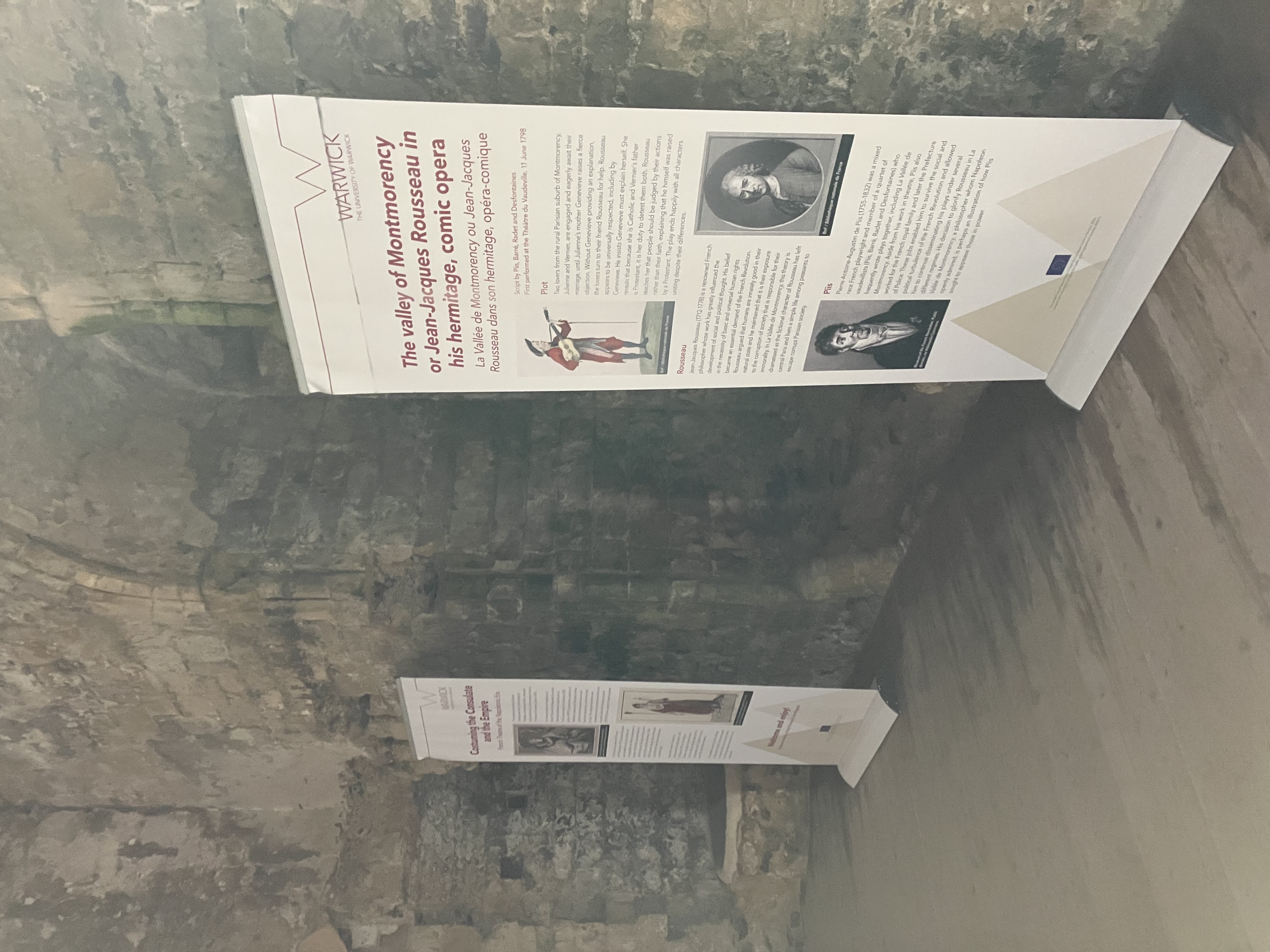
The incorporation of a banner exhibition at Portchester Castle into my URSS project gave me my first real experience as an academic of conducting research that would be presented to a public audience. Not only was this an exciting opportunity but it also reshaped the way I thought about presenting research.
Kate Astbury both facilitated this public engagement element and helped guide me through the process of adapting the presentation of research for a public audience, advising me on how to concisely deliver complex research in an engaging way. It was altogether an invaluable experience that I have taken with me to my post-graduate studies and I am very grateful for all the guidance and support Kate gave me during the project.
Projects in 2021
Read about the public engagement projects students did in 2021.
Classics by Tallulah
Tallulah George
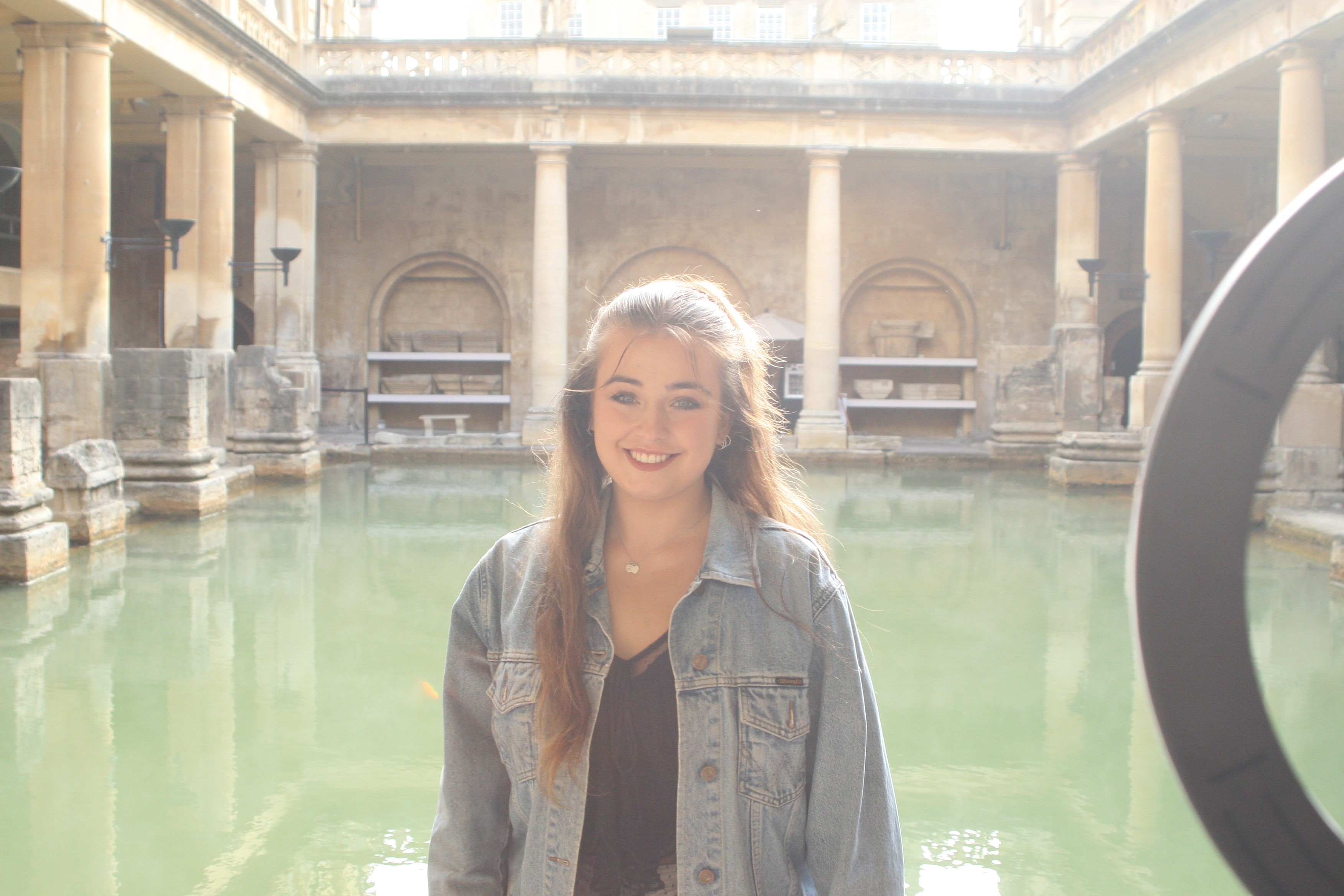
My URSS project, "Museum Vlogs", was about making classics more accessible. I travelled the country, interviewing experts at museums and ancient sites, producing Youtube and Tiktok videos as well as blogs discussing their favourite object that they think should have more attention from the public. I created a website to have all resources in one place, making it as easy as possible to learn about the ancient world.
My aim was to help bring the ancient world to a wider audience by publishing engaging interviews and object studies, simplifying and streamlining the facts. An important element in communicating these select pieces of information effectively is by demonstrating the impact they have on the modern world, how the ancient world can be relevant and relatable, and thus emphasising how ancient studies should be more ‘mainstream’ to understand out modern world.
I found it difficult having to not only conduct the interviews, but also set up equipment, film and take photos, edit the videos and create the website but when everything was finished it was incredibly rewarding knowing how hard I had worked on this project and that I had completed every element. It was also beneficial to create the connections with the various museums and interviewees, being able to stay in touch and update each other about various projects via social media. I believe having many different voices discussing a variety of objects is how we keep classics constantly exciting and fresh.

